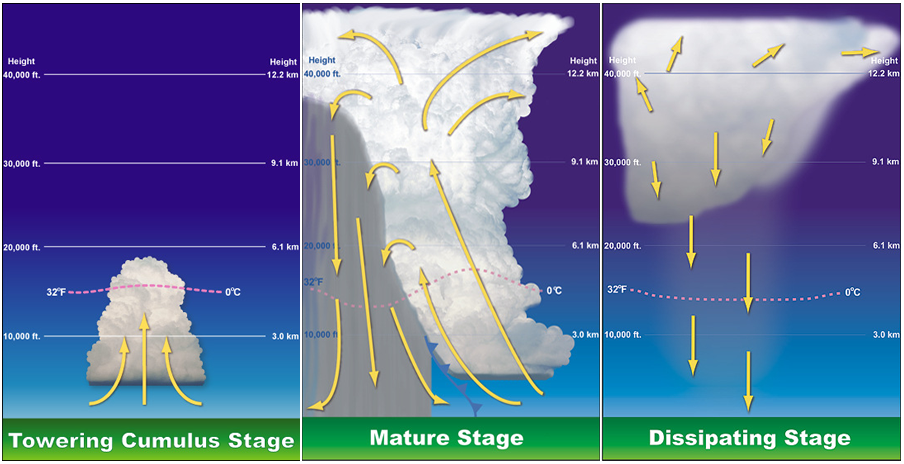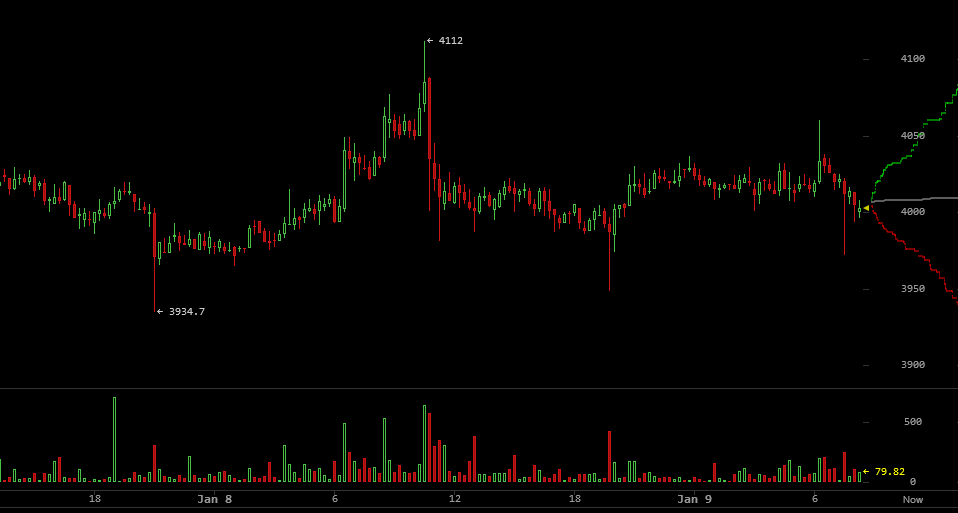Latest news about Bitcoin and all cryptocurrencies. Your daily crypto news habit.

The atmospheric dynamics which drive the lifecycle of a thunderstorm actually have some similarities to the dynamics that drive the Bitcoin market. Specifically, since Crypto.IQ is based in Sarasota, FL, let’s compare the Bitcoin market to the sea breeze — thunderstorm cycle that is so much a part of the weather here .
On a typical summer day in Florida, the sun rises and begins to heat the ground. This solar heating is transferred into the lowest part of the atmosphere near the surface, essentially the air near the ground begins to gain energy and buoyancy. This can be compared to how Bitcoin adoption increases, such as when thousands of Bitcoin ATMs are deployed and stores begin to accept Bitcoin, which pumps energy into the Bitcoin system.
The air near the ground does not immediately erupt into a thunderstorm, since there is almost always a stable layer of air just above the ground called an inversion. This blocks the heated air near the ground from rising and is generated by subsidence in the atmosphere. It can be compared to downward pressure from short sellers on BitMEX, Bitfinex, CME, and CBoE. Essentially, even if Bitcoin adoption is increasing and people worldwide are buying more Bitcoin, the rally can be blocked if short sellers are trying to make the market go down.
The Bitcoin price chart over the past couple of days is indicative of this scenario. A rally began to develop from people buying Bitcoin, and then it got stomped out by some sort of larger market force, which was perhaps short sellers. This can be compared to some of the energetic surface air rising into a cloud in the morning but failing to break the subsidence inversion, and eventually the cloud dissipates.

The sea breeze front then moves through in the early afternoon, and this is a surge of cool ocean air spreading inland and colliding witht the warm inland air. The sea breeze front forces the energetic surface air upwards and it breaks through the subsidence inversion. Now that the energetic surface air has moved above the inversion it finds itself in an environment where it can keep rising all the way to the top of the troposphere.
Since the surface air was capped by the subsidence inversion during the morning and into the early afternoon, this parcel of air is even hotter and more energized. So when the sea breeze moves through as it does most afternoons in Florida, it releases all that energy, and, the air erupts violently into a thunderstorm. Sea breezes happen daily in here when air from over the Atlantic or Gulf of Mexico moves inland to replace air that is lifted from the sun heating the ground.
Further, rain forming in the updraft of the thunderstorm generates significant amounts of heat when it changes from water vapor to liquid water. This latent heat makes the thunderstorm even stronger since it increases the buoyancy of the updraft.
In the Bitcoin market, the sea breeze is comparable to a big short squeeze that rapidly forces the price of Bitcoin upwards and wipes out the short sellers. If the rally from the short squeeze is big enough, and the short sellers get rekt, then the Bitcoin market can continue to rally.
Since the short sellers held down the market for so long the Bitcoin market had become more and more energetic due to adoption, and was just waiting for that moment when the rally could begin. The rally explodes upwards like a thunderstorm updraft.
The latent heat released by rain forming out of water vapor in a thunderstorm updraft can be compared to new businesses and new investors FOMO jumping into the market during the rally. This creates a positive feedback loop that drives the price of Bitcoin even higher.
The price of Bitcoin then rises as high as it possibly can as it did in late 2013 and 2017, similar to how a thunderstorm rises until reaching the bottom of the stratosphere. The stratosphere is the ultimate subsidence inversion blocking upward movement.
Now that the sea breeze thunderstorm is fully mature, it will persist for some time, but it will start to weaken because it’s cut off from its source of hot surface air. At this point, the thunderstorm generates large amounts of cold air via evaporative cooling, and this cold air crashes to the surface and pushes the hot surface air away from the thunderstorm.
In the Bitcoin market this can be compared to people becoming skeptical that Bitcoin will rise anymore since it’s already so high, and therefore people cease to invest anymore money into Bitcoin.
Another way a sea breeze thunderstorm in Florida can meet its doom is through a larger scale weather system coming through and tearing the storm apart with strong upper level winds or strong subsidence, falling air. This can be compared to how the Bitcoin rally in December 2017 was reversed by the launch of CME Bitcoin futures. Those futures introduced massive short selling pressure. This can also be compared to how Mt. Gox collapsed in late 2013, which caused a panic and crash in the Bitcoin market.
So when you visit us here in paradise, and the thunderstorms hit in the afternoon as they so often do, remember they are a parallel to the Bitcoin market cycle, despite these being completely different systems. It reflects how the universal laws of physics cause fractal similarity in nature, where completely different systems can have similarly predictable patterns. Even though Bitcoin is manmade, it is a part of a nature and subject to the universal laws of physics.
Bitcoin: The Gathering Storm was originally published in Hacker Noon on Medium, where people are continuing the conversation by highlighting and responding to this story.
Disclaimer
The views and opinions expressed in this article are solely those of the authors and do not reflect the views of Bitcoin Insider. Every investment and trading move involves risk - this is especially true for cryptocurrencies given their volatility. We strongly advise our readers to conduct their own research when making a decision.